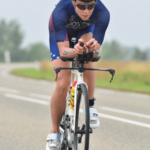Plantar fasciitis is a common cause of heel pain and can be caused by a variety of factors, including overuse, improper foot mechanics, and tight muscles in the foot and calf. Here are a few tips to help you avoid plantar fasciitis:
- Wear shoes that fit well and provide proper support:
Wearing shoes that fit poorly or do not provide adequate arch support can increase your risk of plantar fasciitis. Make sure to choose shoes that fit well and offer the level of support you need. - Stretch your feet and calves regularly:
Tight muscles in the feet and calves can contribute to plantar fasciitis. Incorporate stretching exercises for these muscles into your daily routine to help keep them flexible. - Warm up before physical activity:
Take a few minutes to stretch and warm up before you start exercising. This can help reduce your risk of injury and help prevent plantar fasciitis. - Gradually increase your activity level:
If you’re starting a new exercise program or increasing your activity level, do so gradually. Sudden increases in intensity or duration can put extra strain on your feet and increase your risk of plantar fasciitis. - Use good form when exercising:
Proper form and technique can help reduce your risk of injury. Make sure you’re using good form when you exercise, and don’t hesitate to seek guidance from a professional triathlon coach or physical therapist if you’re unsure.
While heel striking (when the heel is the first part of the foot to make contact with the ground when running) may not directly cause plantar fasciitis, it can contribute to the condition in some cases.
For example, if you have a heel strike pattern and you’re running on a hard surface, the impact forces can be transmitted through your heels and into your plantar fascia, potentially leading to inflammation and pain. Similarly, if you have a heel strike pattern and you’re wearing shoes with inadequate cushioning or support, this can also put additional strain on your plantar fascia and increase your risk of developing the condition.
It’s worth noting that heel striking is a common foot strike pattern and not necessarily a problem in and of itself. However, if you do heel strike and are experiencing pain in your heels or plantar fascia, it may be worth speaking with a physical therapist or a running coach about techniques for modifying your foot strike pattern and reducing impact forces on your heels.
The amount of time it takes to recover from plantar fasciitis can vary depending on the severity of the condition and the treatment used. In some cases, plantar fasciitis can be resolved in a few weeks with simple treatments such as stretching and rest. In other cases, it can take several months or more to recover.
To help speed up the recovery process, it’s important to follow your treatment plan as prescribed by your doctor or physical therapist. This may include activities such as stretching, strengthening exercises, and wearing proper footwear. It’s also important to avoid activities that put strain on your feet until the condition has fully resolved.
There are several exercises that can help alleviate pain and improve mobility in the plantar fascia and the rest of the foot.
Here are a few examples:
- Toe stretches: Sit with your legs extended in front of you and a towel wrapped around the ball of your foot. Gently pull the towel towards you to stretch the toes and plantar fascia. Hold the stretch for 15-30 seconds, then relax and repeat.
- Calf stretches: Stand facing a wall with your hands on the wall and one leg behind you, with the ball of your foot on the ground. Keep your heel on the ground and lean towards the wall until you feel a stretch in your calf. Hold the stretch for 15-30 seconds, then switch legs and repeat.
- Arch stretches: Sit with your legs extended in front of you and a towel wrapped around the arch of your foot. Gently pull the towel towards you to stretch the arch. Hold the stretch for 15-30 seconds, then relax and repeat.
- Heel raises: Stand with your feet shoulder-width apart and slowly raise up onto your toes, then slowly lower back down. You can do this exercise with or without weights to add resistance.
- Towel curls: Sit with a towel on the ground in front of you and your heels on the edge of the towel. Use your toes to scrunch the towel towards you, then use your heels to push the towel away. Repeat for several reps.



